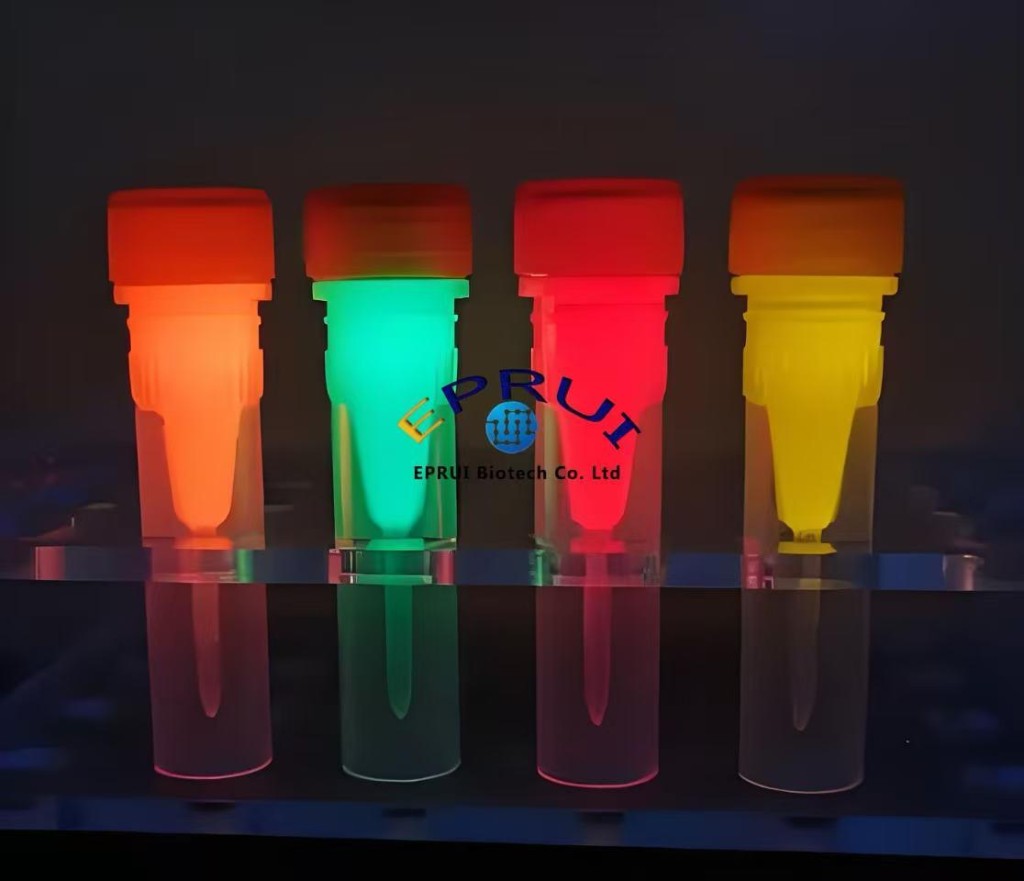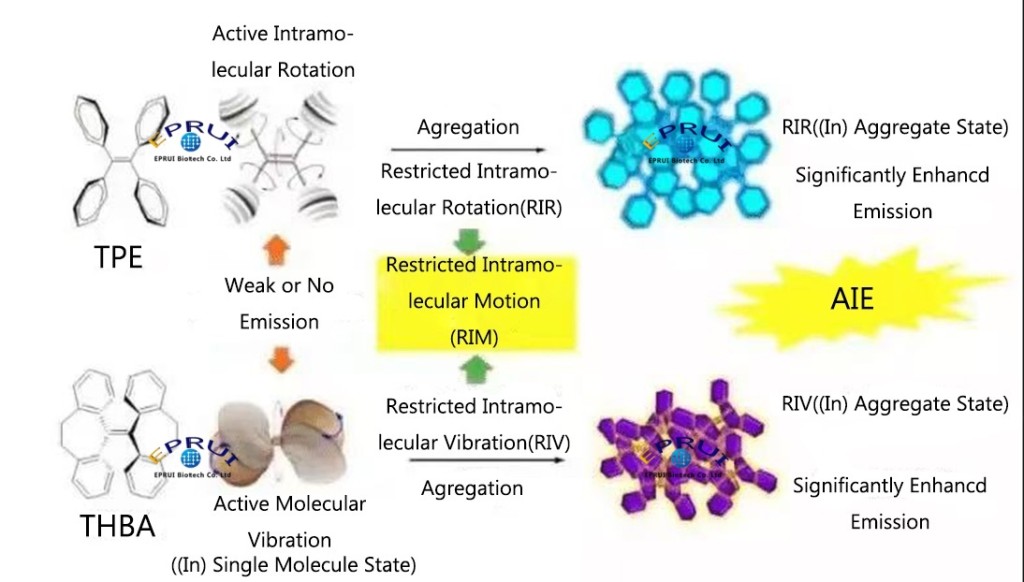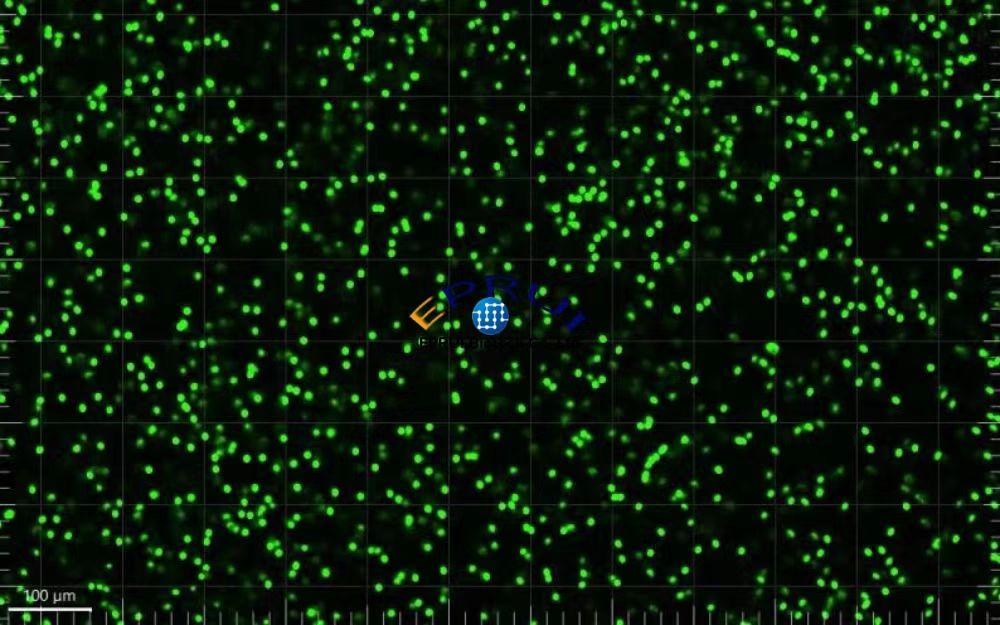Fluorescent microspheres, as an important type of labeling material, play a crucial role in fields such as biomedicine and detection analysis. Currently, common fluorescent microspheres mainly include traditional polystyrene fluorescent microspheres, quantum dot fluorescent microspheres, and AIE fluorescent microspheres. They exhibit significant differences in multiple aspects, and the following is a detailed comparison from dimensions such as luminescence principle, fluorescent performance, stability, biocompatibility, and application fields.
1.Luminescence Principle
– Quantum dot fluorescent microspheres: They emit light through quantum dot materials, and their luminescence originates from the electron transition inside the quantum dots. When irradiated by excitation light, electrons transition from the valence band to the conduction band, and then release fluorescence when returning to the valence band. The fluorescence wavelength can be precisely regulated by adjusting the size and composition of the quantum dots.

– AIE fluorescent microspheres: They emit light based on the Aggregation-Induced Emission (AIE) effect. AIE molecules have weak fluorescence in the dispersed state, but in the aggregated state, the intramolecular rotation is restricted, and the fluorescence efficiency is significantly improved, thereby emitting strong fluorescence.

– Traditional polystyrene fluorescent microspheres: Usually, traditional fluorescent dyes are encapsulated in the microsphere matrix. They emit fluorescence by relying on the fluorescent dye molecules to absorb light energy, with electrons transitioning from the ground state to the excited state and then returning to the ground state.

2.Fluorescent Performance
– AIE fluorescent microspheres: They have high fluorescence brightness and a large Stokes shift, usually exceeding 126 nm, which can effectively reduce the overlap between excitation light and emission light,meanwhile,can lower background interference. They also have a relatively high fluorescence quantum yield; for example, the quantum yield of AIE polystyrene microspheres can reach 83%. They emit stronger light in the aggregated state and have strong anti-quenching ability. Moreover, multiple color options can be achieved by flexibly doping different dyes.
– Traditional polystyrene fluorescent microspheres: Their excitation spectrum and emission spectrum are relatively broad. The fluorescence intensity and quantum yield vary greatly depending on the fluorescent dyes used, and their overall fluorescent performance is generally not as good as that of quantum dot fluorescent microspheres and AIE fluorescent microspheres. When in high concentration or aggregated state, their fluorescence intensity decreases and they are prone to quenching. Their color adjustment is limited, Additionally, the fluorescent performance of different batches may be unstable.
3.Stability
– Quantum dot fluorescent microspheres: They are usually encapsulated using methods such as the microemulsion method, for example, coated with silica or polymers. This encapsulation can protect the quantum dots from external factors, resulting in higher luminescence intensity, less influence from the external environment, and better stability. However, quantum dots that are not well-coated may have the problem of heavy metal ion leakage.
– AIE fluorescent microspheres: Since AIE molecules are encapsulated inside the microspheres, and their aggregated state luminescence property makes them less likely to undergo fluorescence quenching. At the same time, matrices such as polystyrene can effectively isolate the influence of the external environment on the dyes. Therefore, they have excellent photostability and chemical stability, with outstanding anti-photobleaching ability. They also have strong anti-interference ability and are less affected by pH/polarity environment.
– Traditional polystyrene fluorescent microspheres: Their stability is relatively poor. Traditional fluorescent dyes are easily affected by external environmental factors (such as temperature, pH value, solvent, etc.), leading to a decrease in fluorescence intensity or fluorescence quenching. They are also prone to photobleaching under long-term light irradiation and are susceptible to interference, with fluorescence intensity possibly fluctuating with environmental changes.
4.Biocompatibility
– Quantum dot fluorescent microspheres: Some quantum dot materials contain heavy metals (such as cadmium), which may have certain biotoxicity. Although surface coating can reduce toxicity to a certain extent, the potential toxicity issue still needs to be carefully considered in biomedical applications.
– AIE fluorescent microspheres: They have good biocompatibility. The materials themselves and the luminescence process have little impact on biological cells and tissues. Some AIE molecules are biocompatible, making them suitable for biomedical fields such as bioimaging and biological detection, and they have great potential especially in precision medical fields such as single-cell analysis.
– Traditional polystyrene fluorescent microspheres: Their biocompatibility varies depending on the microsphere matrix and the encapsulated dyes. Some conventional polymer matrix microspheres have good biocompatibility, but some fluorescent dyes may have problems such as cytotoxicity, with potential toxicity and risks of residual dyes or solvents, which affect their application in biomedicine.
5.Synthesis and Cost
– AIE fluorescent microspheres: They require multiple synthesis steps and complex processes, as well as the organic synthesis of specific AIE molecules, resulting in high costs.
– Traditional polystyrene fluorescent microspheres: They have mature processes. Methods such as emulsion polymerization are simple and easy for large-scale production, and industrial production gives them an economic advantage with low costs.
– Quantum dot fluorescent microspheres: Their synthesis involves steps such as the preparation and coating of quantum dot materials, which has a certain degree of difficulty, and the synthesis difficulty is between that of AIE fluorescent microspheres and traditional polystyrene fluorescent microspheres.
6.Application Fields
– Quantum dot fluorescent microspheres: They are often used in biological detection, such as immunochromatography and nano-flow cytometry, enabling high-sensitivity detection of biomolecules. They can also be used in cell imaging, in vivo tumor imaging, etc., and can be used to construct nano-sensing systems for detecting drugs and various important components in blood and cells.
– AIE fluorescent microspheres: They are mainly applied in fields such as fluorescent coding and labeling, multiplex analysis, flow cytometry, multi-parameter biological detection, in vivo imaging, and drug delivery. In the field of precision medicine, they have broad application prospects in areas such as single-cell analysis and liquid biopsy. In immunochromatography, they can be applied to the detection of macromolecules (such as anti-SARS-CoV-2 antibodies, Escherichia coli O157:H7, etc.) and small molecules (such as FB1, ZEN, metabolites of furaltadone and furantoin, etc.).
– Traditional polystyrene fluorescent microspheres: They are widely used in fields such as immunoassay, cell sorting, and biosensors, and can also be used in some labeling and detection experiments that do not have particularly high requirements for fluorescent performance. However, their application in high-sensitivity and high-precision detection is relatively limited.
| Characteristics | Traditional Polystyrene Fluorescent Microspheres | Quantum Dot Fluorescent Microspheres | AIE Fluorescent Microspheres |
|---|---|---|---|
| Luminescence Efficiency | Fluorescence intensity decreases at high concentration or in aggregated state | High fluorescence intensity and high quantum yield | Enhanced luminescence in aggregated state, strong anti-quenching ability |
| Photostability | Dyes are prone to oxidation or decomposition | Less affected by the external environment, good stability | Limited molecular movement, excellent stability |
| Biocompatibility | Some dyes have potential toxicity | Certain biotoxicity, surface coating can reduce toxicity | Some AIE molecules have biocompatibility |
| Environmental Sensitivity | Fluorescence intensity may fluctuate with environmental changes | Less affected by external factors after coating | Less affected by pH/polarity environment |
| Synthesis Complexity | Mature processes, easy scaling-up of emulsion polymerization and other methods for large-scale production | Involves preparation and coating of quantum dot materials, with certain synthesis difficulty | Requires organic synthesis of specific AIE molecules |
